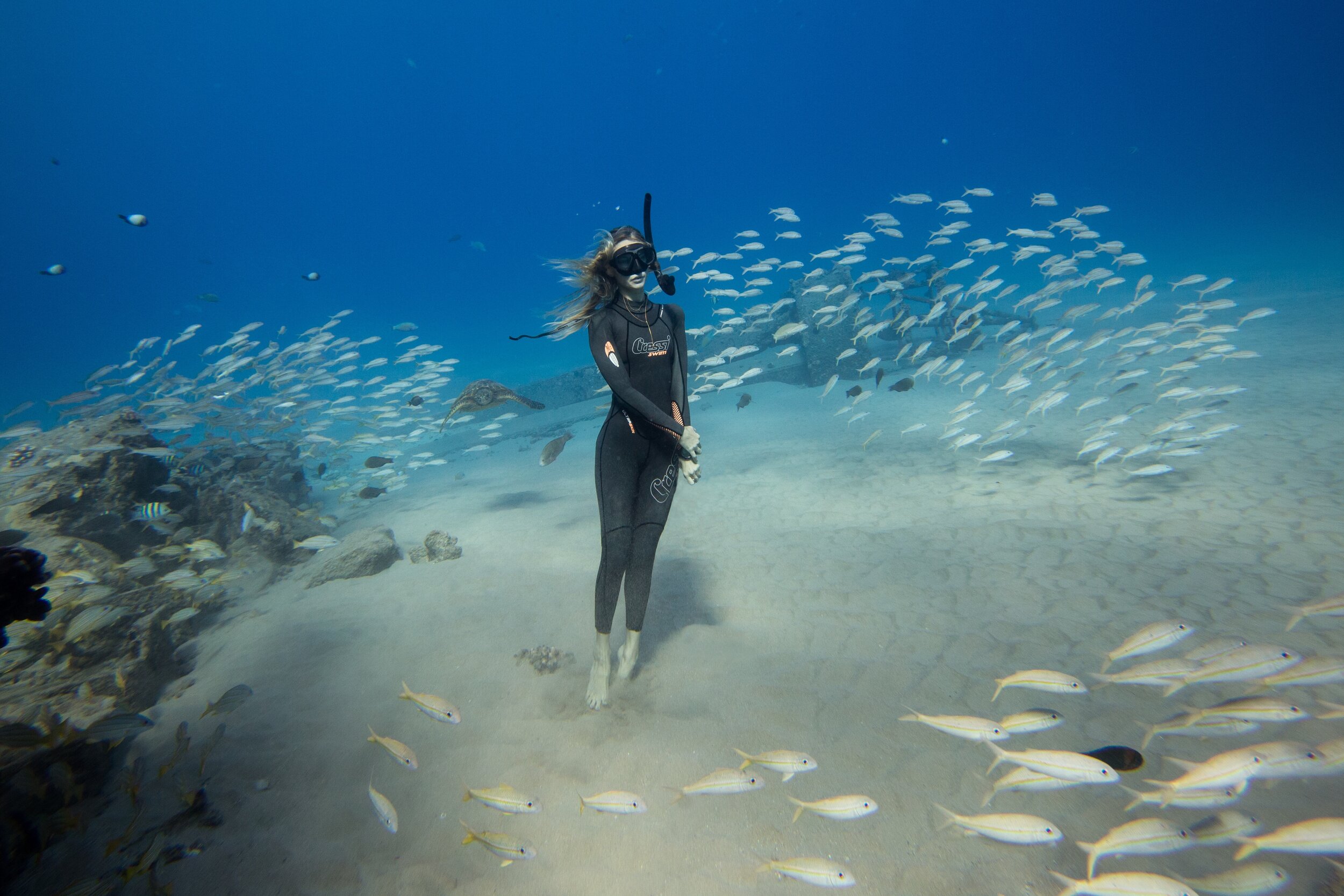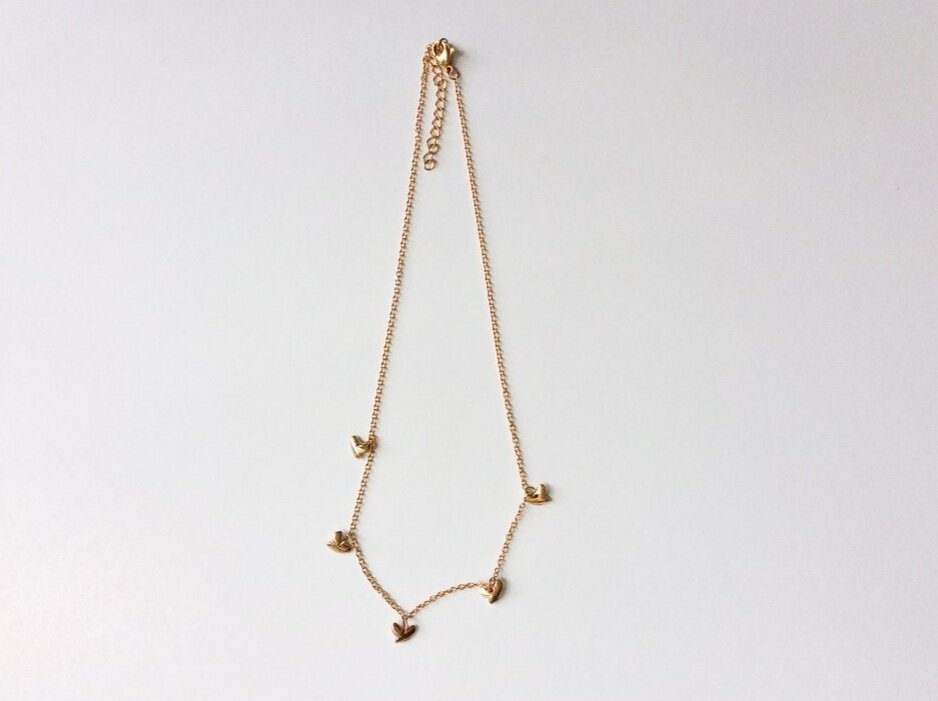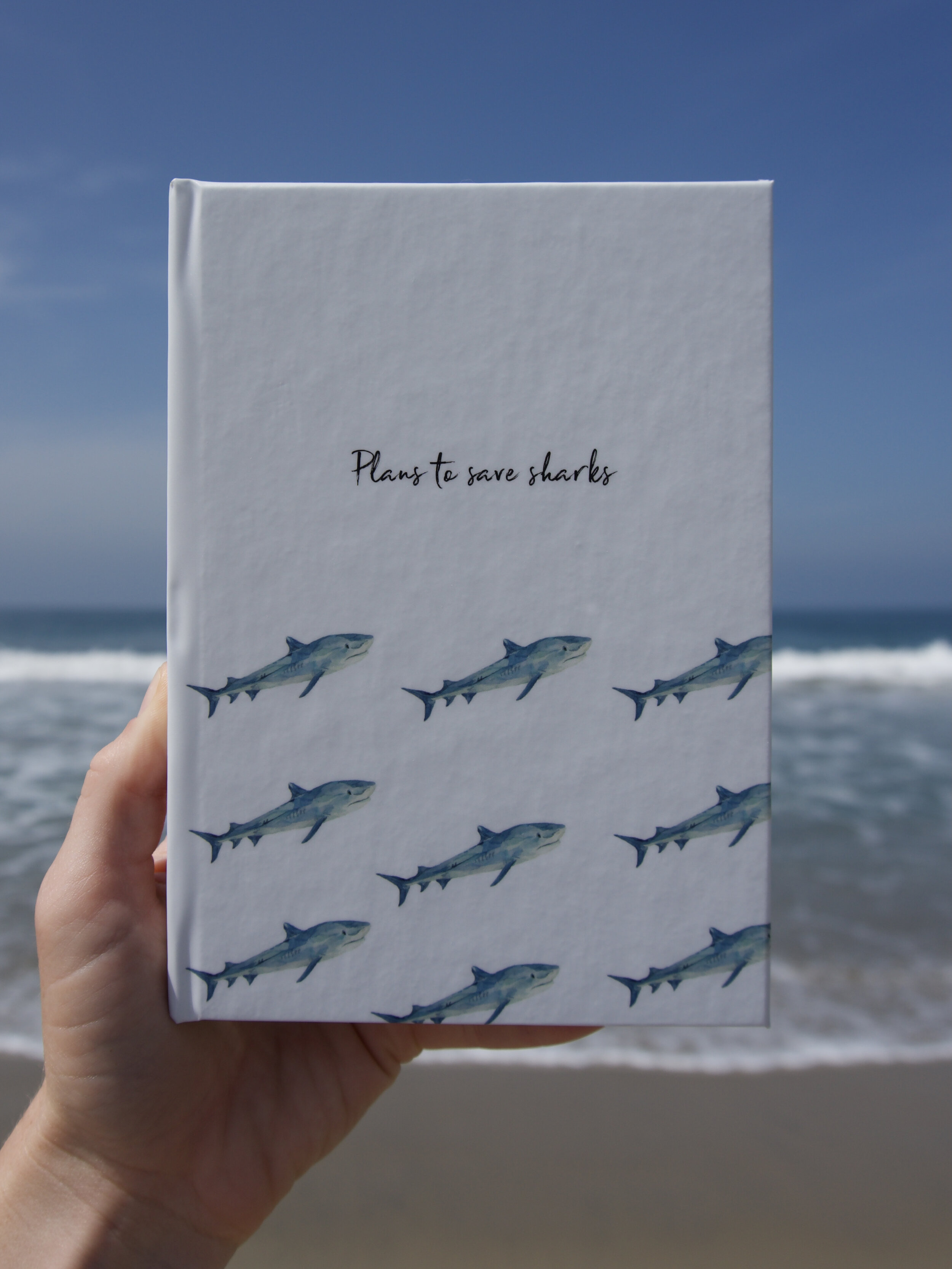Conservation Heroines: Natalie Parra
Photo By Jay Greiner
Natalie Parra’s passion for the ocean shines through in everything she does. She’s an avid diver and freediver, she runs numerous conservation campaigns for different organizations and she creates jewelry and other items to spread her love of the ocean. We sat down with Natalie as part of our Conservation Heroes series to shine a light on the incredible work she’s doing to protect our planet.
SC: Tell us a little bit about your origin story and what led you to conservation efforts. Did growing up in Malibu pull you to a career of protecting your backyard, our oceans?
NP: I've been obsessed with marine life for as long as I can remember. Being raised by the ocean definitely played a huge part in that, but as I grew up I honestly thought I'd go into filmmaking. I was always so drawn to the power a good film could have. Ironically, it was the very thing that pushed me toward conservation. After watching The Cove, I realized I had to do something to help the wildlife I fell in love with as a child. Learning to dive and seeing the impact we are having on the ocean with my own eyes really solidified that, and I began looking for ways to participate in conservation efforts.
SC: Your career thus far has covered protecting many species. What campaign has been the most inspiring to you and why?
NP: I think the campaigns we've been a part of that aim to show the public that sharks aren't the monsters they're portrayed to be in the media have been some of the most inspiring for me. I was really afraid of sharks growing up, and it's been one of the best surprises of my life to now love to be in their presence while diving. I love watching others fall in love with them and then seeing that spark and motivation to do something to help them once they hear about the massive scale of the issues these animals face.
Photo By Juan Oliphant
SC: Can you briefly describe the important work of OPS, Dolphin Project and Keiko Conservation?
NP: Oceanic Preservation Society creates incredible documentary films, including Racing Extinction and the very film that inspired me to pursue conservation - The Cove! We're also getting more involved in campaign work and collaborations with partner organizations, like Shark Allies. At Dolphin Project, we're working to end the slaughter and exploitation of dolphins. We hope to phase out the practice of keeping dolphins in captivity and provide sanctuaries for those that cannot be safely rehabilitated and released. We're also working on ending some of the existing dolphin hunts. The primary goal of Keiko Conservation is to create an online platform that provides ways for anyone to get involved in conservation efforts from anywhere in the world.
SC: In non-pandemic times, you visit Taiji, Japan (the famous location of The Cove) every year with Dolphin Project. Can you share a story from one of your visits and give a little bit of background on Taiji?
NP: The drive fishery in Taiji consists of a small fleet of boats that leave the harbor every day from September to March in search of dolphins. They herd the pods they find to shore using dolphins' sensitivity to sound. By banging on long metal poles attached to the boats, they essentially create a wall of sound that frightens the dolphins. The hunters can then corral them into an infamous cove along the coast before selecting the most attractive dolphins to sell to aquariums around the world and slaughtering the majority of the rest. The official purpose of the hunt is for dolphin meat, but it's quite unpopular to consume in Japan and extremely toxic in methyl-mercury. In reality, the dolphins sold to aquariums are the only thing keeping these hunts profitable.
Being in Taiji is a bit of a surreal experience. It's truly one of the most beautiful places I've ever been, which I never expected. Until you see the hunts, it doesn't seem possible that such horror could be taking place there. I truly love Japan; it's one of my favorite places. I don't think these hunts reflect all of Japan. Most people living there aren't even aware these hunts are taking place, but the cruelty this small group of hunters subject these dolphins to is staggering from start to finish.
During my visit last February, we witnessed the hunters and dolphin trainers selecting Pacific white-sided dolphins for captivity. One by one, they'd wrestle them onto small boats, drive them to the mouth of the harbor, and dump them into holding pens. A few other recent captures were in the pens as well, and we noticed that there was a rope along the side of one of the pens tied around a dolphin's fluke that was bobbing at the surface. The trainers and hunters do this when one of the dolphins has died so they can conceal the body from our cameras while pulling it to a part of the pen where they can meet up with a small boat and cover it with tarps to be disposed of. The realization that these new captures, who were just ripped away from their families, bashed up and bleeding, were being dumped into a pen to find the lifeless body of another dolphin bobbing at the surface was indescribable. There were other empty pens right next to it that these dolphins could have been put in, but this one was the closest. They couldn't even allow them this one small decency, and it was maddening.
SC: What are the biggest threats that dolphins face?
NP: Bycatch, hunting, marine debris and capture are some of the biggest threats facing dolphins, but pollution is also becoming a growing threat. We've dumped so many pesticides and contaminants into the ocean for so long, both directly and through runoff. Marine life is facing heavy exposure to these, and some of these contaminants can even be passed down to their offspring.
SC: Why are dolphins important players in their ecosystems?
NP: Dolphins are a top-level predator who help keep ocean ecosystems and populations balanced. They are also considered an indicator species because the presence of sick individuals can help alert us to unseen problems like disease, illegal fishing and agricultural runoff.
SC: What do sharks and dolphins have in common, if anything?
NP: I think it's interesting that a lot of the threats they both face today are the result of misleading PR - and in completely different ways! Sharks have been portrayed as monsters, with even sightings of them described as an "attack" in the media. This has led to the average person not really caring that we're losing an estimated 70-100 million sharks a year. On the other hand, dolphins are idolized as carefree animals who want to play and interact with humans. This has led to the captive dolphin industry, which further fuels that portrayal as well as the demand for wild captures and hunts. It's also led to a lot of harassment of wild dolphins from people who truly believe dolphins always want to play with us.
Photo By Guillaume Nery
SC: As if OPS, Keiko and Dolphin Project weren’t enough, you also run a shop called Thessalonike. What do you hope your pieces will convey?
NP: Yes! Thessalonike helped support me when I first got involved in conservation and volunteer work. All of the pieces are inspired by wildlife, and some of them feature specific individuals with unique markings and stories. It's really nice to have a creative outlet that is also tied into the work I do.
SC: What is one piece of career or passion advice you have received that sticks with you?
NP: When I first got into conservation, a colleague warned me not to overload myself and try to pursue too many issues at once or I'd burn out. At first I laughed it off because I'm so passionate about the work I'm participating in that I didn't think that drive could ever fizzle out, but there is a lot of truth to what she said. Conservation can be tough, both mentally and physically. There will be a hundred losses for every win and humans' constant attack on the environment from all sides can pretty much guarantee you at least one piece of heartbreaking and awful news every day. It can make all of the problems in your personal life feel insignificant next to the widespread degradation we're causing, and that can make it difficult to prioritize your health and safety. I think we constantly have to remind each other that we can't aid these issues if we don't take care of ourselves as well.
SC: What are you most excited about for the future of conservation?
NP: I'm excited about the ways technology is connecting so many activists around the world. Social media has its pros and cons, but it's undoubtedly provided great opportunities to get the public involved in conservation, especially when it comes to urgent call-to-actions and the need for a large number of people to get behind some of these issues. I really hope that this element of technology and social media continues to grow.
SC: If funding were not an issue, what would your dream conservation project be?
NP: I'd really like to create more educational content. The climate crisis and overpopulation have led to fewer and fewer environmentalists understandingly not wanting to have children. It's definitely a topic of conversation that comes up very frequently with colleagues because we worry that the next generation won't have as many environmentally mindful kids. I'd love to be a part of creating a series or webisodes that highlight the importance of biodiversity and the issues facing wildlife to inspire the next generation to treasure and protect them.
Thank you, Natalie, for being an ally to sharks, dolphins and our oceans! A curated selection of Natalie’s pieces are available in our Shark Cafe shop and give back to shark and ocean conservation.







